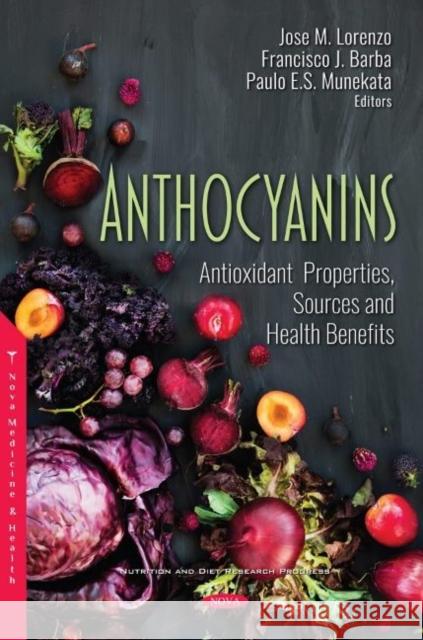Anthocyanins: Antioxidant Properties, Sources and Health Benefits » książka
Anthocyanins: Antioxidant Properties, Sources and Health Benefits
ISBN-13: 9781536178166
Anthocyanins are compounds associated with multiple interesting effects and potential applications. This group of natural compounds can be found in many foods (ranging from red to blue depending on the matrix) such as berries, eggplant, plums, black beans and red grapes. Moreover, the knowledge accumulated so far support the key role of anthocyanins in food and pharmaceutical industry, research and in the life of consumers. The versatility of effects attributed to anthocyanins is disclosed in this book by covering several aspects ranging from its chemical and physical characteristics, separation and identification, techniques to preserve isolated compounds and reaching the healthy benefits and its use in sports. In Chapter 1, the fundaments and main aspects related to anthocyanins are disclosed. The scientific evidence indicates positive effects were related to anticancer, antioxidant, antidiabetic and inflammatory effects, for instance. In addition, anthocyanins are excellent food additives by improving the color of food in the range between red and blue. Moreover, the applications are also related to strategies to extract and improve the stability of isolated compounds. A successful isolation is necessary to obtain anthocyanins for pharmaceutical and food applications. Chapter 2 aimed to explore the concepts and advances made to improve the recovery of anthocyanins from several types of sources. It also explored the characteristics of both conventional and novel technologies. The isolation of anthocyanins also requires an adequate approach to identify and quantify each compound within this class. Chapter 3 is dedicated to discuss the approaches to identify and quantify anthocyanins, particularly for mass spectroscopic, nuclear magnetic resonance and high performance liquid chromatography. In addition, the aspects related to method validation are also explored. Once the extraction and adequate quantification of isolated anthocyanins occurs, it is of great value to prevent their degradation. The concepts and use of encapsulation technique are discussed in Chapter 4. Particular attention is given to the methods and the composition of encapsulating material to improve stability. Prior to considering the biological effect and health benefits associated with the consumption of anthocyanins, the consumption and crucial events during the digestion and absorption must be considered in order to clarify and support strategies in food and pharmaceutical applications. The concepts, biological events (with emphasis on digestion) and the role of gut microbiota on the bioaccessibility and bioavailability of anthocyanins are presented in Chapter 5. Following the absorption of anthocyanins several biological effects related to health benefits were reported in scientific literature. The first and preserve knowledge is related to the traditional consumption in order to treat diseases in folk medicine. This perspective and the scientific evidence raised so far are compiled in Chapter 6. In the chapter, the different plants sources to treat diseases are described. In Chapter 7, the relation between anthocyanins and antioxidant activity is discussed. The chapter contains the fundaments and scientific data regarding oxidative stress, lipid oxidation and evaluation of antioxidant activity (in both in vivo and in vitro methods). Moreover, the data from purified compounds and natural extracts are also presented and discussed. Another relevant benefit associated with anthocyanins is their impact on cardiovascular diseases. Chapter 8 presents the main factors associated with the development of cardiovascular diseases and discussed the role of anthocyanins to prevent the progression of this disease. Particular attention is given to the dietary sources of anthocyanins. Reducing the burden of cancer is another pertinent effect related to anthocyanins. In order to disclose the impact of anthocyanins against the development of cancer, Chapter 9 compiles fund











